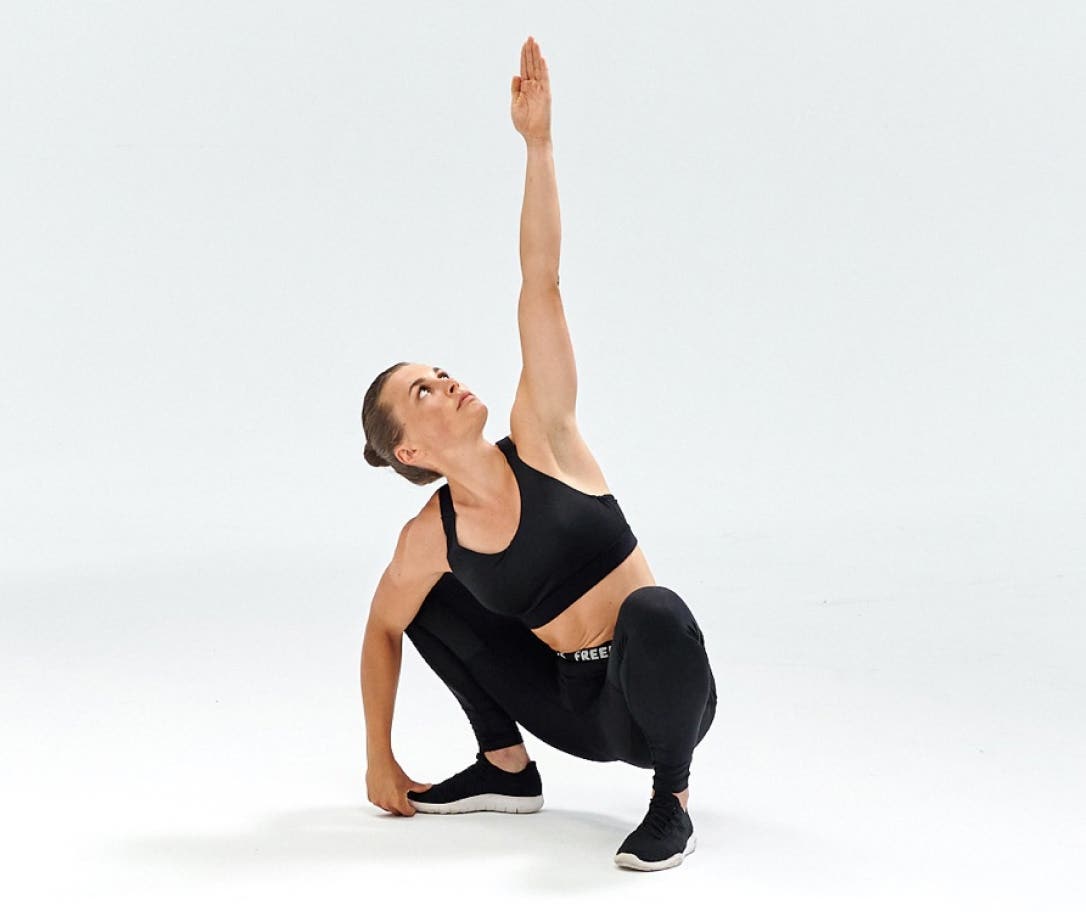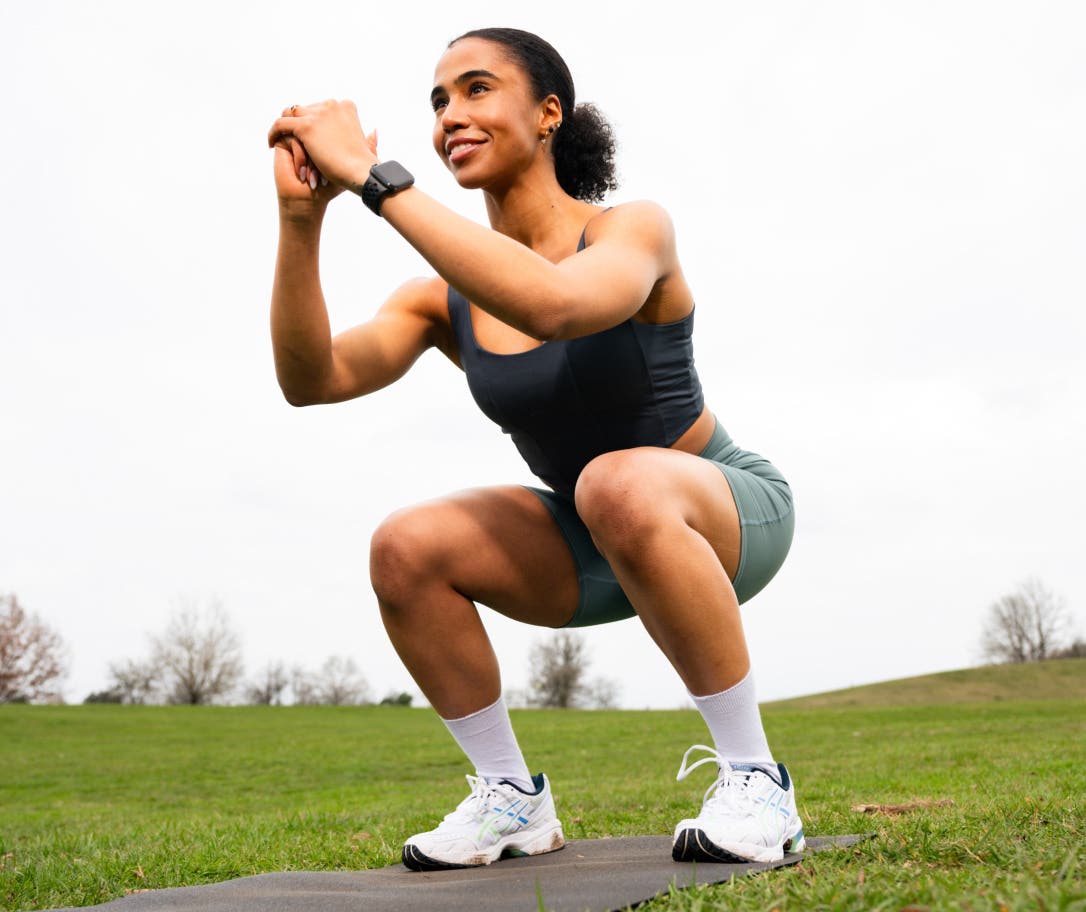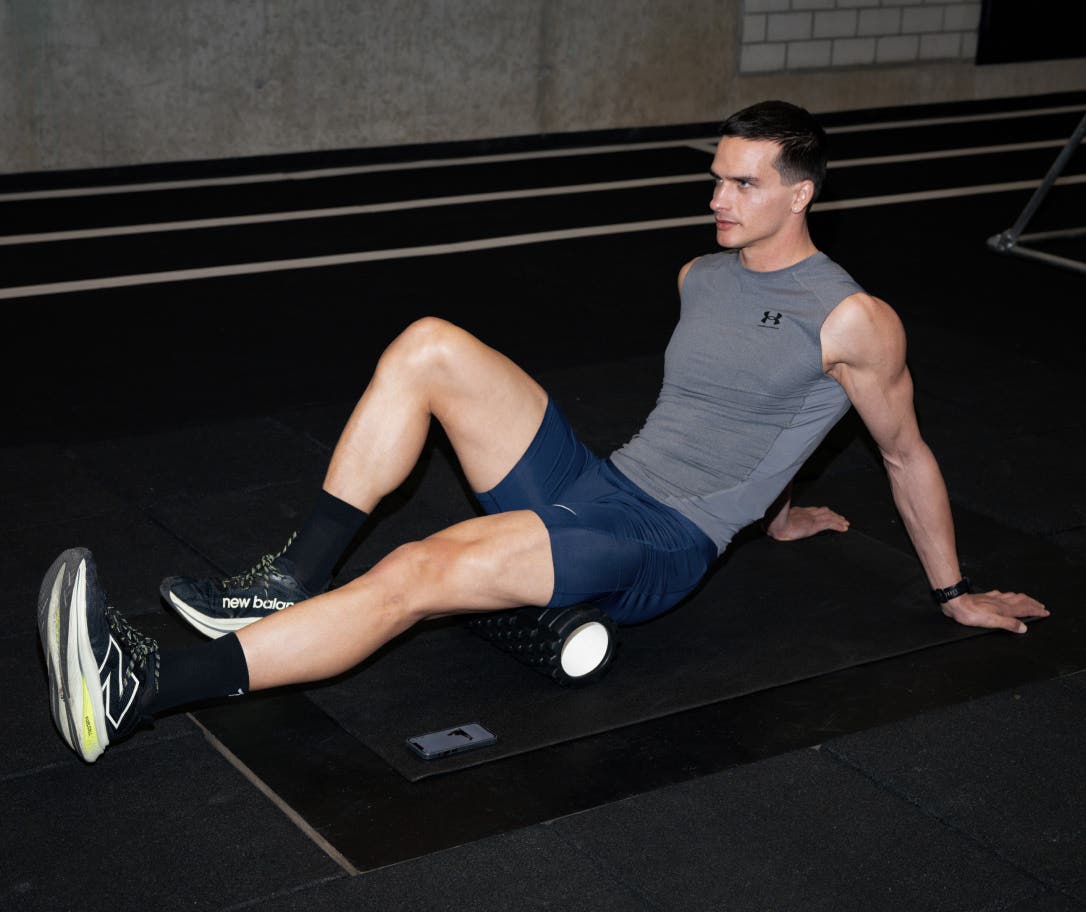Mobility is your joints’ ability to move freely and effectively through their full range of motion. Not to be confused with flexibility, which is the capacity of muscles to stretch, mobility combines flexibility with strength and control. This means not only can you stretch a muscle, but you can also move it through its range of motion with stability and precision.
Good mobility is foundational for both daily activities and exercise. Imagine reaching for something on a high shelf — good shoulder and spine mobility make this action smooth and easy. On the flip side, poor mobility can make such seemingly simple tasks challenging and uncomfortable. And it takes just one joint moving improperly to start a domino effect throughout the rest of your body to compensate for that lack of mobility.
By maintaining and improving joint mobility, you ensure that your body can handle both the demands of everyday life and physical activity without unnecessary strain or discomfort.
Problems caused by reduced joint mobility
Impact on daily life
When your joints lack mobility, even simple daily tasks can become challenging.
Limited hip mobility can make it hard to bend down to tie your shoes or get in and out of a car comfortably. Reduced ankle mobility might make walking or climbing stairs difficult, while poor shoulder mobility can hinder activities like reaching overhead or lifting objects.
Increased risk of injury
Decreased joint mobility often leads to compensatory movements where other parts of your body have to pick up the slack. That’s where the domino effect mentioned above comes in.
If your hips are stiff, your lower back might have to overcompensate when you bend or lift. This overuse can lead to strain, muscle imbalances, and injuries. Joints that move incorrectly can also be more prone to injuries like sprains and strains because they’re not able to absorb and distribute forces efficiently.
You can identify your mobility deficiencies by getting screened by an exercise professional who understands your specific situation and demands and can offer advice based on that.
Poor posture
When your body compensates for limited mobility, it can lead to poor posture and increased stress on other joints.
If your thoracic spine (upper back) is stiff, your neck and shoulders might become tense and overworked as they try to maintain proper alignment. This can lead to chronic discomfort and pain in these areas and contribute to conditions such as rounded shoulders or a forward head posture, two of the most common postural issues today.

Why is joint mobility important?
Good mobility ensures that your joints function optimally, allowing smooth and efficient movement. This is crucial for athletes who rely on their joints to perform complex movements with precision.
For example, a soccer player needs flexible and mobile ankles and hips to maneuver effectively and change direction quickly. Lose some of that mobility, and you can lose a step that can make all the difference in your sport.
Posture
Proper mobility helps you to maintain good posture. When joints move freely and correctly, it’s easier to keep your spine and other body parts aligned. Good posture minimizes strain on your muscles and joints, reducing the risk of pain and injury.
Adequate hip mobility, for example, can help prevent an excessive anterior pelvic tilt (where the top of your pelvis tilts forward), which in some individuals can lead to lower back pain.
Reduce the risk of joint pain and injury
Incorporating mobility work into your fitness routine helps prevent joint pain and injuries by ensuring that joints and muscles are not over-stressed due to compensatory effects. Not only can proper mobility help guard against strains and sprains, but it can also decrease the risk of chronic conditions such as arthritis or tendonitis.2
What’s the difference between flexibility and mobility?
Flexibility is how much a muscle can stretch. It's often assessed by how far a muscle can lengthen at rest or under a controlled stretch. While flexibility is a component of mobility, it only covers one aspect.
Mobility, however, includes both the ability to stretch and actively control the movement through the full range of motion.
What’s the difference between stability and mobility?
Stability refers to the strength and control of a joint to maintain its alignment during movement. It’s about ensuring the joint remains secure and stable as you move. While flexibility allows a joint to move through its range of motion, stability ensures the joint doesn’t become unstable or misaligned during these movements.
Good mobility requires a balance of flexibility and stability; you need to be both flexible enough to move freely and stable enough to control those movements properly.

How to increase mobility
Dynamic stretching
Dynamic stretching involves moving your body through a full range of motion with controlled, smooth movements.3 It prepares your muscles and joints for exercise by increasing blood flow and warming up the body. In case you don’t know, static stretching before a workout is not ideal.4
Leg swings help loosen the muscles around the hips and prepare them for more strenuous activity. Arm circles help warm up muscles surrounding the shoulder joints. Dynamic stretching is typically done before workouts to enhance performance and reduce the risk of injury.
Self-myofascial release
Self-myofascial release (SMR) uses tools like foam rollers or massage balls to apply pressure to specific muscles and fascia. This helps to release tightness, improve blood flow, and increase flexibility.5
Foam rolling your calves can help alleviate tightness and improve ankle mobility. Although it doesn’t increase mobility permanently, it’s an excellent, easy way to get moving while training your joints and maintaining muscle health.
Focus on technique
Performing exercises with proper technique is an important aspect of improving mobility and avoiding injuries. Prioritizing form ensures your movements engage the correct muscles and joints.
While doing Squats, for example, make sure that your knees track over your toes and your back stays neutral. This correct form ensures that you are effectively working on both strength and mobility in the intended way, instead of putting strain on parts of the body you don't want to stress with the exercise.
Example mobility movements for major joints and muscle groups
- Hips: Hip Circles loosen the hip joint. Hip Stretches help improve flexibility in the front of the hip.
- Shoulders: Shoulder Warmup, or arm circles, stretch and activate the muscles around the shoulder joint. Wall angels, where you stand against a wall and move your arms up and down while keeping them in contact with the wall, can help improve shoulder mobility and posture.
- Ankles: Ankle circles enhance ankle flexibility. Calf Stretches help improve flexibility and range of motion in your ankles.
- Spine: Cat-Cow stretches, performed on your hands and knees, involve arching and rounding your back to enhance spinal flexibility. Gentle spinal twists help maintain spinal mobility and reduce stiffness.

Benefits of including mobility work in your routine
Correct imbalances
Regular mobility work helps identify and address muscle and joint imbalances. By focusing on releasing tension and improving the flexibility of tight or restricted areas, and strengthening weak areas, you can correct these imbalances and improve overall movement patterns wherever you feel restricted.
Increased awareness of how you move
Incorporating mobility exercises increases your awareness of your body’s movement patterns. This heightened awareness, known as proprioception, helps you understand how different body parts work together and how to move them more effectively. This is an important aspect of mobility that is often overlooked.
Stay active longer
Including mobility work in your routine supports overall health and longevity by keeping you active and engaged in physical activities. Regular mobility exercises prevent stiffness, enhance your ability to move comfortably, and encourage a more active lifestyle in the long term.
Let’s recap
Mobility is key to staying on top of your performance and feeling your best. Beyond supporting your overall health, good mobility promotes joint health, improves posture, and helps keep the risk of injury at bay.
Try incorporating dynamic stretching, self-myofascial release, or an evening stretch sesh as part of your regular workout regime. Prioritizing mobility will help correct imbalances, increase movement awareness, and keep you active in the long run.
Sources
[1] Kiesel, K., & Plisky, P. J. (2009). The role of functional movement screening in injury prevention and performance enhancement. Strength and Conditioning Journal, 31(4), 55-64.
[2] Massey, H. A., & Herrington, L. (2017). Effects of hip mobility on injury prevention and performance: A review. Sports Medicine, 47(8), 1697-1708.
[3] Harrison, A. J., & Gaffney, A. (2016). The role of dynamic stretching in improving flexibility and reducing injury risk in athletes. Journal of Sports Science & Medicine, 15(2), 175-183.
[4] Behm, D. G., & Chaouachi, A. (2011). A review of the acute effects of static and dynamic stretching on performance measures. European Journal of Applied Physiology, 111(11), 2633-2651.
[5] Feland, J. B., & Myrer, J. W. (2017). The effects of self-myofascial release on flexibility and performance: A review of the literature. International Journal of Sports Physical Therapy, 12(2), 294-302.